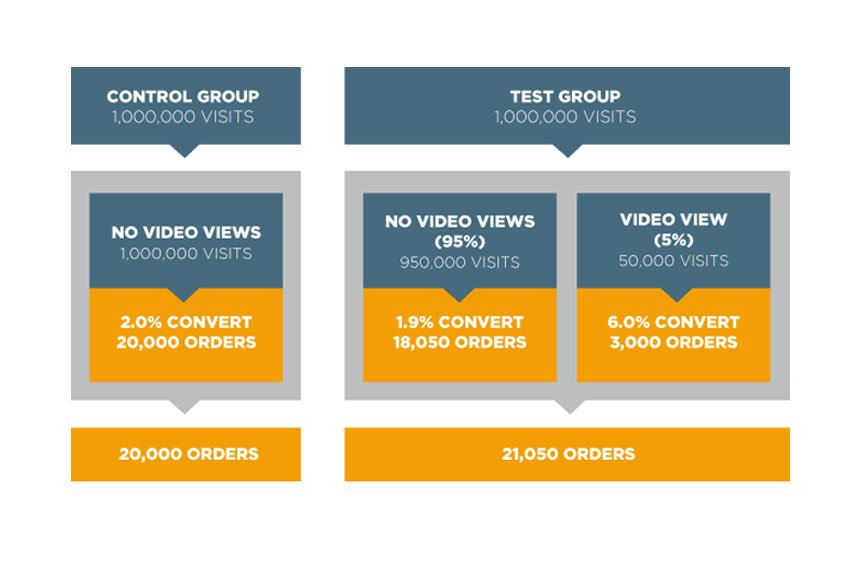Companies want to prove that business video delivers a measurable financial impact to justify the investment.
In the current online business environment, all companies need to invest in solutions that have a clear and measurable ROI and payback period. Sure, vendors of business video solutions tout the impact of video on targeted business metrics, such as conversion rate, churn rate, engagement rate, call rate, and customer satisfaction as drivers of ROI. But, do they prove that business video is actually delivering these results? If vendors only compare the metrics of video viewers to non-viewers, without controlling for volume of video views and the effects of self-selection bias, the actual ROI results will be inaccurate.
True SmartVideo solutions are designed to address these concerns. Every program starts with defined goals that are measurable. The initial phase of the program includes a persistent control group that separates visitors into a test group (has access to video) and control group (no access to video). Performance of the video group vs. the control group is measured for each metric. This addresses the volume of video views on the total performance and also controls for self-selection bias. The aim is to measure transactional impact (short term) and lifetime impact (longer term) on key metrics.
I’ll use an example to illustrate these points.
A common statement is that “video-viewers convert at 3x the rate of non-viewers”. If non-viewers convert at 2%, this means that video viewers convert at 6%. Without using a control group to address video view rate and self-selection bias, the ROI projections would not be accurate or realistic. Consider the below visual.

This illustration demonstrates the impact of self-selection bias on the test visitors who don’t view video (slightly lower conversion rate) and also reflects the impact of scale of visitors who choose to view the video. Although video viewers convert at 3X non-viewers, the actual lift in conversion is 5% when comparing total video group vs. control group (2.1% conversion rate for the video group vs. 2.0% for the control group).
To effectively measure impact of business video, it is critical to define the success criteria and metrics before kicking off the program. Then, establish a control group to measure the overall effect of video on the target metrics, instead of measuring only actions of video viewers vs. non-viewers.







